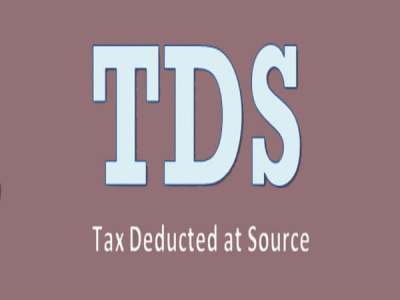TDS under Section 194N is deducted by banks (private, public, and cooperative) or post offices.
Tax Deducted at Source (TDS) on cash withdrawals is a government mechanism aimed at discouraging large cash transactions and encouraging digital payments. Here’s a detailed overview of its provisions, rates, and exemptions.
Read More: Attention taxpayers! Foreign income and assets must be disclosed before December 31: Report
Governing Provision: Section 194N of the Income Tax Act
Section 194N of the Income Tax Act mandates TDS on cash withdrawals exceeding a specific threshold from banks, cooperative banks, or post offices.
Introduced on September 1, 2019, it seeks to regulate cash flow and ensure compliance with income tax norms.
What Is TDS on Cash Withdrawal Under Section 194N?
Section 194N of the Income Tax Act mandates Tax Deducted at Source (TDS) on cash withdrawals exceeding specific thresholds in a financial year (FY). The thresholds are:
- Rs 20 lakh, if the individual has not filed Income Tax Returns (ITRs) for all three preceding Assessment Years (AYs).
- Rs 1 crore, if the individual has filed ITRs for at least one of the three preceding AYs.
At What Rate Is TDS Deducted on Cash Withdrawals Under Section 194N?
The applicable TDS rates depend on the individual’s ITR filing status:
For ITR Filers (Any or All of the Three Previous AYs):
2% on cash withdrawals exceeding Rs 1 crore in a financial year.
Read More: FICCI Pushes For GST Cut On EV Batteries, Charging Services To Boost Affordability
For Non-ITR Filers (All Three Previous AYs):
-2% on cash withdrawals exceeding Rs 20 lakh but up to Rs 1 crore.
-5% on cash withdrawals exceeding Rs 1 crore in a financial year.
This provision is designed to promote transparency and compliance with income tax regulations while discouraging excessive cash transactions.
TDS Applicability: Key Guidelines In Details
For Withdrawals Exceeding Rs 1 Crore:
Rate: 2% of the aggregate cash withdrawals.
Applies to: Withdrawals from one or more accounts maintained by a customer during a financial year.
Updated Rules Effective July 1, 2020:
If income tax returns are not filed for the preceding three financial years, the following rates apply:
- 2% on aggregate cash withdrawals exceeding Rs 20 lakh but up to Rs 1 crore.
- 5% on aggregate cash withdrawals exceeding Rs 1 crore.
In other cases: The standard 2% TDS rate remains applicable.
Read More: High-value transactions: What you need to know to stay compliant with Income Tax regulations
From April 1, 2021 Onwards:
Cash withdrawals across all accounts are combined to calculate the total withdrawal for TDS purposes.
In Absence of PAN/Aadhaar:
TDS is levied at a higher rate of 20%.
Who Deducts TDS on Cash Withdrawals Under Section 194N?
TDS under Section 194N is deducted by banks (private, public, and cooperative) or post offices.
The deduction occurs when cash payments exceed the specified thresholds of Rs 20 lakh or Rs 1 crore (depending on the individual’s ITR filing status) from accounts maintained with these institutions.
Exemptions from TDS on Cash Withdrawals
Certain entities and individuals are exempt from TDS under Section 194N. These include:
- Government Entities
- Banking Companies, Cooperative Societies, and Post Offices
- Business Correspondents of banking companies or cooperative societies.
- White Label ATM Operators authorised by the Reserve Bank of India.
- Central Government Notified Entities, subject to specified conditions:
-Commission Agents or Traders operating under Agricultural Produce Market Committees (APMC).
-Authorised Dealers under FEMA, including franchise agents, sub-agents, and Full-Fledged Money Changers (FFMCs).
This structured approach ensures compliance with income tax regulations while fostering transparency and reducing reliance on cash transactions.
Disclaimer: The views and investment tips by experts in this News18.com report are their own and not those of the website or its management. Readers are advised to check with certified experts before making any investment decisions.





































